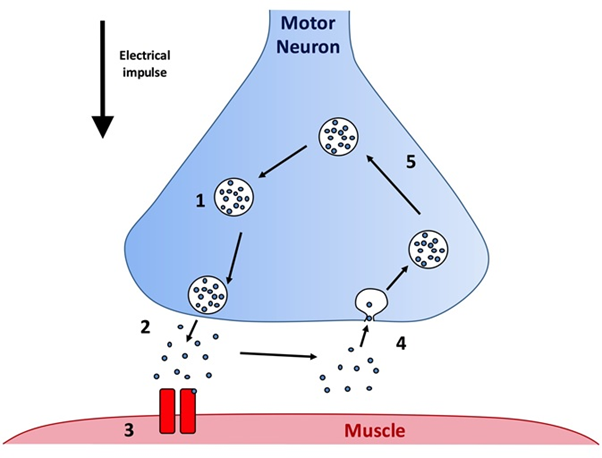The Basic Cellular Process of Endocytosis is Impaired in SMA Models
The Basic Cellular Process of Endocytosis is Impaired in SMA Models
Page last updated: 13th September 2016
Lower motor neurons are the principal cell type affected by the low levels of SMN protein encountered by patients with SMA. However, it remains a mystery as to why these nerve cells are specifically involved.
Basic research is being performed in laboratories across the world to identify what goes wrong in cells and tissues that have less than usual amounts of SMN. It is vital that researchers continue to elucidate these mechanisms, as it will lead to an improved overall understanding of the disease and potentially identify new therapeutic strategies. Past research has indicated that the SMN protein is vital for many basic cellular processes that allow cells to function normally and survive.
Thanks to two recently published scientific studies, we can now add endocytosis to the ever-growing list of pathways that the SMN protein is involved in.
Endocytosis is a process in which individual cells are able to eat or engulf substances from their surrounding environment. It serves as a system for cells to transport and recycle important materials. For instance, nerve cells rely on endocytosis for the recycling of neurotransmitters (Figure 1). Neurotransmitters are chemicals released by neurons to communicate their electrical excitement to other cells, such as muscle cells. In order to not have to continually make new neurotransmitter molecules, they can be engulfed back into nerves by the process of endocytosis in order to be recycled and re-used. Endocytosis is vital for motor neurons because it allows the efficient, continual excitation of muscles that is required for voluntary muscle contraction.

Figure 1. Endocytosis in Motor Neurons. When an electrical signal reaches the terminal of the motor neuron, it induces synaptic vesicles (large white circles) containing neurotransmitter molecules (small blue circles) (1) to release their contents into the gap between the nerve and muscle cells (2). The neurotransmitter is then able to bind to receptors on the muscle and cause muscle contraction (3). Excess neurotransmitter in the gap can be engulfed back into the motor neuron by endocytosis (4), and recycled for re-use (5).
The first of the two studies was published by the Hart Laboratory at Brown University in the USA. They used very small worms that have the scientific name Caenorhabditis elegans to show that reduced SMN protein levels affect the ability of the motor neurons to communicate with the muscles. Because endocytosis is integral to this process, they looked at the role of additional endocytosis proteins, and found that they are able to modify the communication process.
These experiments implied that endocytosis is impaired in SMA models. The scientists therefore went on to test whether viral infection, which requires endocytosis, is affected by low levels of SMN, and indeed it was. Although the motor neurons were not specifically affected, this work shows that SMN depletion affects endocytosis and that this may impact the ability of the motor neurons to excite their target muscles.
Coming hot off the heels of the first study, a second publication from Brunhilde Wirth’s Laboratory in Cologne, Germany confirmed the importance of endocytosis in SMA pathology.
The protein Plastin 3 has previously been identified by the Wirth group as being a protective modifier of SMA in humans. Plastin 3 was shown to be more abundant in some healthy females who completely lacked the SMN1 gene, which would normally cause SMA to develop, i.e. Plastin 3 can protect against SMA.
Plastin 3 is a protein that helps to maintain the structure of cells, and when it is absent in yeast, endocytosis is impaired. These previous findings suggested to the researchers that endocytosis may be important for SMA.
Indeed, this is what they found in their latest study – reduced SMN levels in mice were shown to dramatically impinge upon endocytosis. Interestingly, this process was completely restored by increasing Plastin 3 protein levels. A second modifying protein known as COROC1, which is also involved in endocytosis, was shown to have a similar effect. This rescue of endocytosis in SMA mice caused a drastic improvement in neuromuscular function and survival of the diseased animals.
Together, these two recent scientific studies have shown that defective endocytosis is an important disease mechanism contributing to the development of SMA. In the future, trying to support this process therapeutically may be a useful strategy that could be used in combination with gene therapies such as Nusinersen or AVXS-101.
